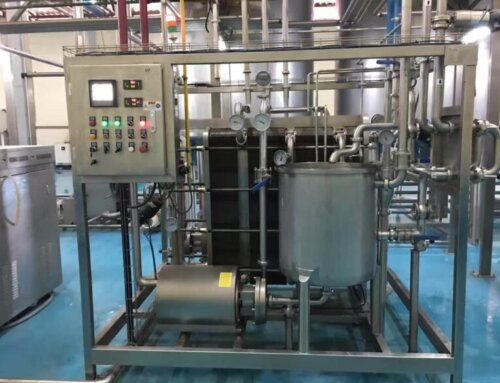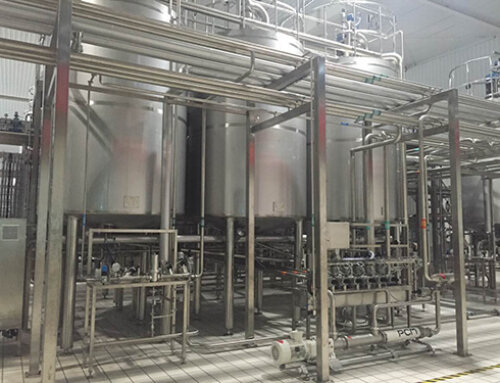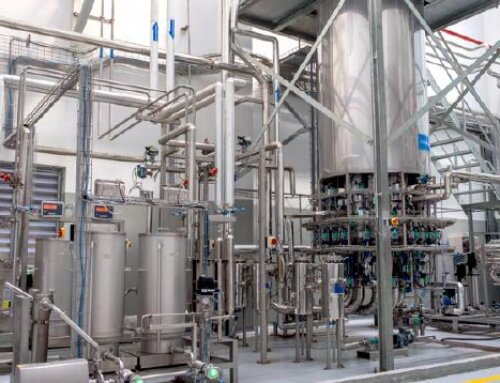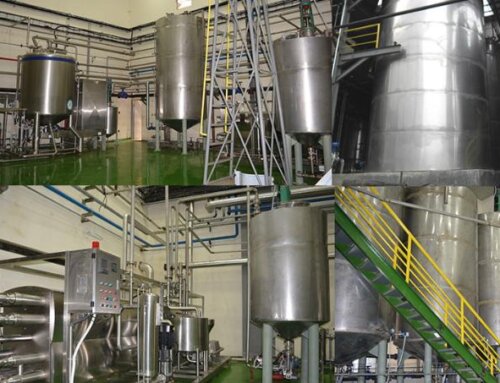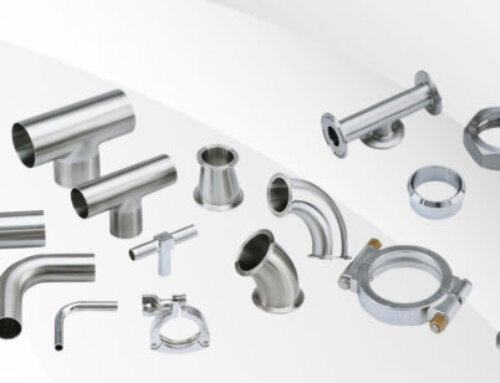Soy Milk Powder Processing Plant Description
- Soy milk powder is made by extracting soy milk from the fresh soybeans, then concentrating and spray-drying the soy milk into fine soy milk powder products.
- The soy milk powder is a substitute for milk powder, which can be used in many industries such as nutritional supplements for those with lactose intolerance, raw ingredients for ice cream and other cold drinks, and baking products. So the soy milk powder products market is increasing a lot with these years of development.
- The soy milk powder processing plant capacity is from 5 tons per hour to 30 tons per hour with fresh soybeans input, and the end products can be filled into standup pouches and cans.
- The soy milk powder processing plant is involved in fresh soybean cleaning, impurity removal, peeling, enzyme inactivation and grinding, soy milk pulp-residue separation, sterilization and deodorization, preparation and concentration, soy milk powder spray drying and packaging.
- The soy milk powder processing machines are all made of food grade SUS304, and the whole line is equipped with a CIP cleaning system to ensure all the products are meeting with hygiene requirements in food industry.
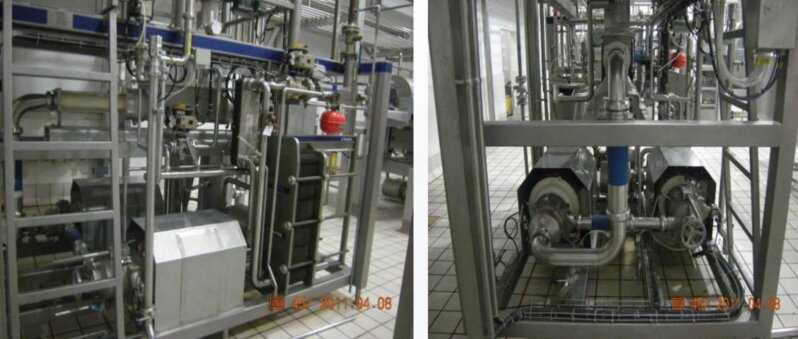
Soy Milk Powder Processing Plant End Products and Package
Pure soy milk powder: Soybeans are soaked, ground, filtered, boiled, and then dried and powdered to make soy milk powder. It retains the main nutrients of soybeans and tastes close to fresh soy milk. Pure soy milk powder usually will separate the fiber in soy milk and will not add any ingredients in the milk, it is pure and natural, and the end products will be filled into pouches or cans.
Flavored soy milk powder: Flavored soy milk powder is usually a product made by mixing soybean milk with other ingredients (such as sugar, milk powder, flavoring, etc.). Vegetable oil or other food additives are sometimes added to soy milk powder, so the flavor is richer than soy milk powder and the taste is closer to milk.
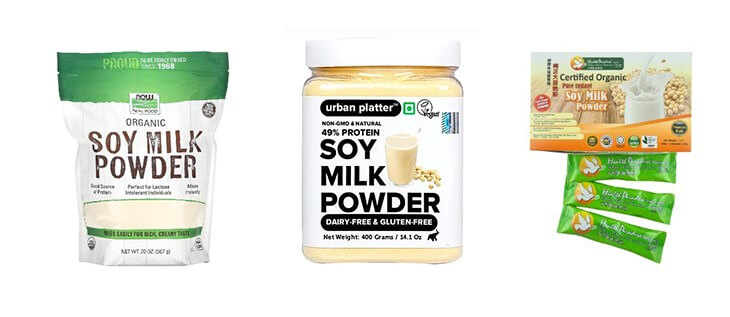
Key Process Of Soy Milk Powder Processing Introduction
- Soybean acceptance: fresh soybeans of the current season that are above national standard grade one, with impurities less than 1%, no or very few green beans, beans bitten by insects, no moldy beans, moisture content less than 13%, and protein content greater than 37%. Soybeans should be stored in a clean, dry, well-ventilated place free from rodents and insects and 10 cm from the ground and 20 cm from the wall.
- Soybean Selection and Cleaning: High-quality soybeans are selected and cleaned to remove impurities like dirt, metal, stones, and other foreign materials.
- Soaking and Dehulling: The cleaned soybeans are soaked in water to soften them, making it easier to remove the outer hulls. The peeling rate is required to be above 85%, and the germ must be removed by wind.
- Soybean Enzyme Inactivation and Soften: The dehulled soybeans are passed through a spiral deactivator and a small amount of sodium bicarbonate solution is added. At the same time, hot water above 80°C is dosed into the spiral cooker, and steam is passed through the jacket layer to inactivate enzymes and soften the soybeans before they are fed to the refiner.
- Soybean Grinding and Refining: The soybean grinding and refining process is a key process in soy milk processing and soy milk powder plant. There are two mainstream methods in the soybean refining process: the first is wet refining, which is to soak and peel the soybeans, send them to the refining unit, It is mostly used for soybean powder without slag separation; the second is semi-wet refining, which is to soften the peeled soybeans through a deactivator, then grind, separate the slag, instant enzyme inactivation at ultra-high temperature, vacuum flash steaming to remove the beany smell, and cool them. It is mostly used for soybean milk powder with slag separation. There are two refining steps in the soybean refining process: the first step is coarse grinding, in which the enzyme-inactivated materials are transported to the coarse grinding machine through the deactivator, and are initially ground by the coarse grinding by a crushing coarse grinding machine. The second step is fine grinding, in which the materials after coarse grinding are transported to the fine grinding machine for secondary fine grinding, and the fine grinding machine uses a multi-layer gear pump emulsifying grinding machine.
- Soybean Slag Separation: The ground soybean mixture is filtered to separate the solid okara (soy pulp) from the liquid soy milk by the two-phase decanter centrifuge separator.
- Soy Milk Sterilization and Deodorization: Soy milk is directly heated to 140℃ by exchanging with high-pressure steam, and after keeping warm for 7-10 seconds, it enters the vacuum degassing tank for flash deodorization, and the material temperature drops to about 90℃ before being discharged. The new technological progress is no longer “boiling”, but adopts “ultra-high temperature instant enzyme inactivation and flash evaporation” technology, which flashes and deodorizes under vacuum negative pressure, thus achieving the purpose of enzyme inactivation and sterilization, removing most of the beany smell, and greatly protecting the protein from damage, making the soy milk white and smooth, and fresh in taste. Compared with the old “boiling” process soy milk, the “boiling” soy milk is gray in color and has a rough taste.
- Soy Milk Cooling and Preparation: The soy milk is cooled to 10℃ in two stages, using tower water and ice water, and then the ingredients are pre-dissolved according to the formula. The materials enter the mixing emulsifier and the shear force is used to refine the material particles. The fat, protein and sugar are embedded in each other, making them more uniform and more soluble in water.
- Soy Milk Concentration: After the material enters the concentration system, it is evaporated and concentrated using the falling film evaporator. The purpose is to remove more water and increase the material concentration. The material outlet concentration must be 38~43%. The outlet concentration of high-protein products is adjusted according to the viscosity of the discharge material.
- Soy Milk Spray-drying: The material entering the high-pressure pump is pressurized to form a mist in the drying tower through the sprayer, and exchanges with the hot air entering the drying tower. After the water evaporates continuously, the material becomes dry powder and falls into the integrated built-in fluidized bed at the bottom of the tower for secondary drying.
- Soy Milk Powder Cooling and Packaging: The soy milk powder is cooled 25-30℃ to prevent clumping and then carefully packaged in moisture-proof containers to maintain its quality and shelf life.

